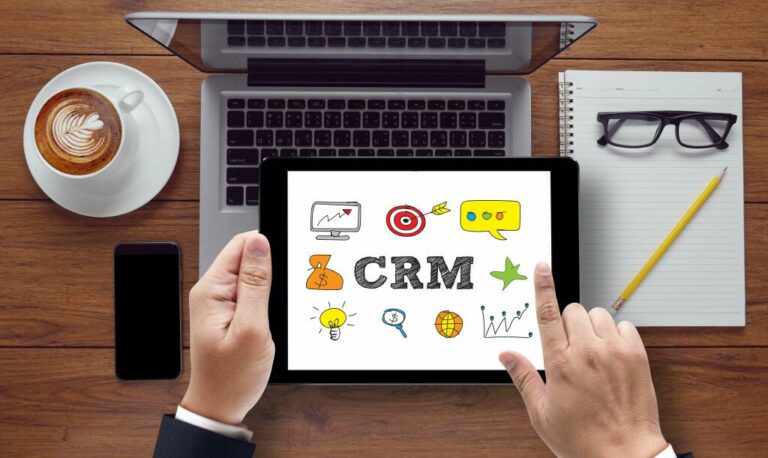Electronic Health Record Data Governance And Data Quality In The Real World
Содержание
Several possible advantages to EHRs over paper records have been proposed, but there is debate about the degree to which these are achieved in practice. If an EHR is not updated immediately, as soon as new information is gleaned, such as following an exam or after test results come in, anyone viewing that EHR could be receiving incorrect or incomplete information. This could lead to subsequent errors in diagnosis, treatment, and health outcomes, not only by the issuing practitioner but also by any specialists, pharmacists, physical therapists, or personal trainers participating in the patient’s care. A certified EHR system can help a physician’s office to meet Medicare and Medicaid Meaningful Use requirements so that they can access certain incentives the federal government issues. The following details the many advantages and potential disadvantages of EHRs so that you can make the best-informed decision about whether and when to implement an EHR system in your medical practice.
If a malpractice claim goes to court, through the process of discovery, the prosecution can request a detailed record of all entries made in a patient’s electronic record. There are many potential benefits of EHRs for patients and providers alike, including an array of clinical, organizational, and societal outcomes. While EHRs can serve as excellent tools for physicians, one cannot expect them to function effectively in isolation. Clinical and caregiver careers include patient-care technicians, nurses, nurse practitioners, physician assistants and physicians. Non-clinical resource needs would include data and quality management, billing and collections, admissions, and more.

This enhanced patient access also benefits providers, incidentally, by eliminating the time and energy spent locating, copying, and sending files the patient is now empowered to access him or herself. EHRs also allow you to store medical records more safely and collect and analyze data more easily. This includes creating reports faster, exploring data trends more thoroughly, and more effectively controlling inventory. EHRs have helped reduce preventable medical errors, like prescribing mistakes due to a doctor’s illegible handwriting. EHRs have built-in flags for various drug interactions and other adverse events.
You Can Build An Audit Trail With An Ehr
But, a better understanding of the numbers can translate into better care for patients. A seamless EHR and RCM integration will ensure accurate claim submission, reduce claim rejection and proper reimbursement with full payments from the insurance companies. The billing information will be processed and delivered accurately and will be backed up with correct medical and clinical data. However, you may want to consider having at least some basic information on hand in case of emergency, including advance directives, which outline your decisions about health care, such as whether to use life-support machines. We are here to help you build a health tech product that delivers value to your own customers, meeting their needs.
Electronic health records —the digital version of a patient’s information—are secure, transferrable records with incredible potential to improve the care physicians provide for patients. Learn how health information exchanges allow health care providers to securely share patient data electronically to support patient care across the country. Having electronic health records software means that you can document all your clinic’s tasks digitally and in real-time without the need for paper charts. Beyond being paperless, there are many other electronic health record benefits to consider.
Personal Health Records And Patient Portals
Despite the headway being made in this field, the challenge for AI-based tools is extracting data in a standardized format that takes into consideration the entire patient journey from a hollistic view. In order to maximize AI in medical records, healthcare organizations are starting to work closely with data scientists to understand what data is relevant and how to generate value from it, which ultimately leads to value for the patient. Track appointments, vaccinations, medications and preventive or screening services, such as mammograms. In fact, studies have shown when parents use personal health records for their children, the children are more likely to get their preventive well-child checkups on time. The Veteran’s Administration’s Blue Button platform allows health care providers outside the system to access and print patient records. The program is intended to promote patient engagement and portability of records.
- Untrained staff can waste more time attempting to navigate the system than if they stuck to regular paper files.
- Semantic interoperability provides a meaningful exchange and the use of clinical data between many healthcare systems.
- These safeguards add protection for records that are shared electronically and give patients some important rights to monitor their medical records and receive notification for loss and unauthorized acquisition of health information.
- The National Institute of Standards and Technology provided the detailed test scripts that were used to certify EHRs.
- These different inputs are transformed into crisp ontology using a mediator (e.g., DB2OWL, X2OWL or ADL2OntoModule) suitable for each type.
Digitization of forms facilitates the collection of data for epidemiology and clinical studies. Overall, those with EMRs that have automated notes and records, order entry, and clinical decision support had fewer complications, lower mortality rates, and lower costs. An Electronic health record is an official record which digitalizes the health information for improving efficiency, quality of care and it defiantly reduces the costs. Quality measurement, clinical decision support, population health and interoperability all benefit from standard medication data. Complex medication-based logic can fail in automated applications without high-quality data, often requiring the visual review of blank fields. The bottom line is that they were created for ease and patient safety, although it is not as black-and-white as initially thought.
For a smaller practice that cannot manage the cost or workload of an on-site system, this can be a good option. However, practitioners should fully understand how much control they will have over the EHR and ensure they are comfortable with the legalities and ownership of data. The advantages of a system like this are largely based around speed, as there is little delay with the server on site. The challenges come down to the cost of owning and operating the system, and the personal responsibility for maintenance and security. While all EHR systems have similar capabilities and functionalities, different types of EHR platforms exist. Healthcare practices can choose between different configurations, which have their own advantages and disadvantages.
Any time an industry can move away from error-prone, redundant, insecure paper records, it is a benefit! EHRs create organized records, with few concerns about legibility, storage footprints, or accessibility. Digital transformation is designed to make life easier and more streamlined, and EHRs are a great example of this. Physician-hosted systems put responsibility for the EHR in the hands of the physician or practice. Patient data is kept on servers held within the practice location, and the physician/practice is responsible for buying the hardware and software. They also have to maintain the system and ensure the security and integrity of the data.
Ehr Partnerships
The EHR also has the ability to support other care-related activities directly or indirectly through various interfaces, including evidence-based decision support, quality management, and outcomes reporting. PicnicHealth explains what electronic health records and electronic medical records are, including the differences between EHRs vs EMRs. Learn where to find medications in your electronic health records and electronic medical records .

Templates may help remind clinicians to add more history or details of the physical exam, thus justifying a higher level of coding . Some EMR systems automatically monitor clinical events, by analyzing patient data from an electronic health record to predict, detect and potentially prevent adverse events. This can include discharge/transfer orders, pharmacy orders, radiology results, laboratory results and any other data from ancillary services or provider notes.
Students learn concepts related to the use of electronic medical records software, using Epic EMR as an illustrative example. Students follow guided exercises and simulated scenarios in the software. The 2009 Health Information Technology for Economic electronic healthcare records and Clinical Health Act marked the Federal government’s mandate for adoption of EHRs by health care providers. Implementation of these systems was phased in over time, but today, almost all hospitals and health systems are EHR super users.
Part of HIPAA called the Security Ruleprotects the storage and transfer of EHRs. If your doctor’s office or hospital sends health information electronically, they must use safeguards that make sure it is accessed only by those allowed to see it. Learn where to find your immunization records from your medical records and how you can get them to keep track of your vaccinations and immunizations. By carefully assessing the past and present changes in their condition, they can provide better treatment options. After completing her PhD from the Institute of Biotechnology at the University of Lausanne, Switzerland, she found her passion in medical and scientific communications. She is dedicated to delivering high-quality content on the topic of the future of healthcare to our readers.
Time
EHR is centralized that helps both the patients and healthcare providers as patient information, history, and insurance status can be taken only once, and the patient does not have to fill out forms on every appointment. A patient in need of immediate medical attention can find relief and not fill paperwork that can be frustrating and time-consuming. Likewise, physicians can receive the information beforehand and better prepare a diagnosis and treatment rather than spending time and asking the patient for information. The information in EHR is collected by all the health care practitioners involved in the specific patient’s care, and the patient information is designed to be shared all across other medical practices and organizations.

Some systems let you interact with your health care provider or nurse online. You might be able to ask questions that way, or set up and manage appointments. If one doctor puts you on a new medicine, the others get to see what it is. So there’s less chance of one health care provider prescribing a medicine that could cause problems if it’s used with another medicine. Medical transcription costs get significantly reduced because digitization of records eliminates the need for having to turn paper charts into electronic ones when they’re generated electronically in the first place.
Over 112,000 Health Care Professionals Use Practice Fusion For Their Ehr
There are challenges in the collection and input of EHR data that negatively impact practicing physicians in various ways. These challenges need to be resolved to fully realize the benefits of EHR. This case study will review three studies on the challenges facing EHR systems. It is already being used to analyze large amounts of data to improve productivity, accelerate digital health, improve personalized care and support the clinical decision making process.
Inaccurate Data
More time must be spent by both the implementation team and the healthcare provider to understand the workflow needs. The steep price of EHR and provider uncertainty regarding the value they will derive from adoption in the form of return on investment has a significant influence on EHR adoption. EHRs may also improve prevention by providing doctors and patients better access to test results, identifying missing patient information, and offering evidence-based recommendations for preventive services.
EHR combines all patients demographics into a large pool, and uses this information to assist with the creation of “new treatments or innovation in healthcare delivery” which overall improves the goals in healthcare. Combining multiple types of clinical data from the system’s health records has helped clinicians identify and stratify chronically ill patients. EHR can improve quality care by using the data and analytics to prevent hospitalizations among high-risk patients. The goal is to have patient information available to anyone who needs it, when they need it and where they need it. With an EHR, lab results can be retrieved much more rapidly, thus saving time and money. It should be pointed out however, that reducing duplicated tests benefits the payers and patients and not clinicians so there is a misalignment of incentives.
A tiered architecture also better supports specialized applications such as clinical decision support and operational reporting. The Nuvola Hub lets your organization stay connected with all of its vendors, payers, and patients.Is your EHR integrated with other healthcare centers such as public health registries or labs? In just one installation, the Nuvola Hub by Iron Bridge connects your organization to other EHRs, labs, registries, payers, and providers. We’re a passionate group of doctors, patients, data nerds, engineers, and builders, who believe in making something real that changes lives today and in the future. Learn about personal health records , including different types, like standalone PHRs and tethered or connected PHRs. Doctors and medical personnel also benefit from EHRs through improved medical practice management.
If you have a power outage or computer failure, that information can become inaccessible. An essential part of a strong EHR is the ability to have an information technology team available to solve technical problems immediately so that patient care interruptions are minimized. In contrast to the traditionally bad handwriting for which physicians are notorious, computerized records are easy to read. As a result, there’s much less risk of misinterpretations or errors in critical areas such as diagnosis and medical orders that can lead to dire health consequences for the patient. Long before the unprecedented challenges that COVID-19 has placed on this country’s healthcare systems, UT Dallas recognized the importance of preparing healthcare management students for the real world.
There are many advantages of implementing an EHR system, but the most significant is streamlining revenue cycle and improving overall healthcare facilities. Medical practices provide the necessary diagnosis and treatment services but need to be properly reimbursed to ensure financial stability. On the other hand, EHR goes beyond the standard collection and tracking of medical data. EHRs typically contain the same basic information you would put in a PHR, such as your date of birth, medication list and drug allergies. But EHRs contain more extensive information because they’re used by health care providers to store visit notes, test results and much more.
Concerns about security contribute to the resistance shown to their adoption. When users log in into the electronic health records, it is their responsibility to make sure the information stays confidential and this is done by keeping their passwords unknown to others and logging off before leaving the station. The U.S. military’s EHR, AHLTA, was reported to have significant usability issues.
Electronic medical records were developed to standardize documentation, prevent errors, promote concise charting, and have a way of storing medical records long-term while having a straightforward way to retrieve them. However, EMRs come with both pros and cons when utilized in an organization. Your EHR is the fabric that weaves together all the intricacies of providing quality care to patients. Far from what it used to be, the face-to-face encounter is only a small portion of the responsibilities clinicians have in providing, managing, coordinating and supporting patients’ health and healthcare experience. The ability to communicate with patients and payers, hospitals or other agencies in the healthcare spectrum, is a vital piece of healthcare delivery and patient management. But the lack of RCM software with advanced features and without integration with EHR, a medical practice may seem to struggle to manage its finances properly.
It’s important to work with a vendor that understands state and federal regulations with which practitioners must comply. For example, an electronic signature in the form of a typed-out name, common in many EHR platforms, won’t meet compliance for Medicare. It’s also important to work with a vendor that understands critical privacy and confidentiality of patient data.
In these cases, medical records become the single means of communication between each member of this virtual working environment. While computerization of medical records does not solve the entire problem of hospital information management, in many cases it provides options that allow for reducing them or introduces benefits that make its implementation desirable. Interoperability is an important term that describes the extent to which systems and devices https://globalcloudteam.com/ can exchange data and interpret that shared data. In order for two systems to be interoperable, they must be able to exchange data and subsequently present that data in a way that can be understood by the user (HIMSS.org). Interoperability is important since it improves the delivery of health care by making the right data available at the right time to the right people. It allows data transfer among EHR systems and health care stakeholders (HealthIT.gov).

